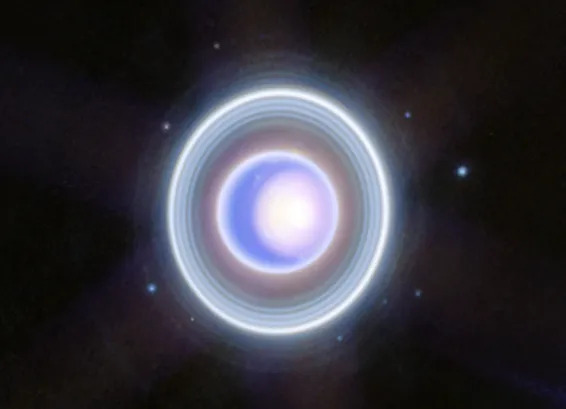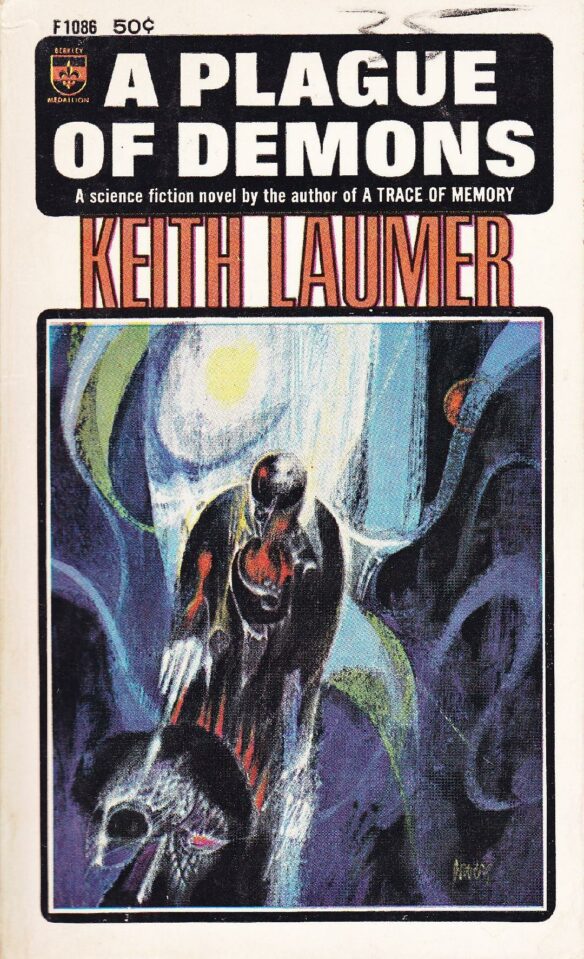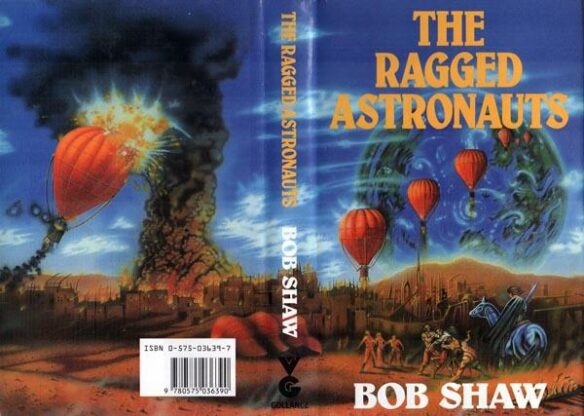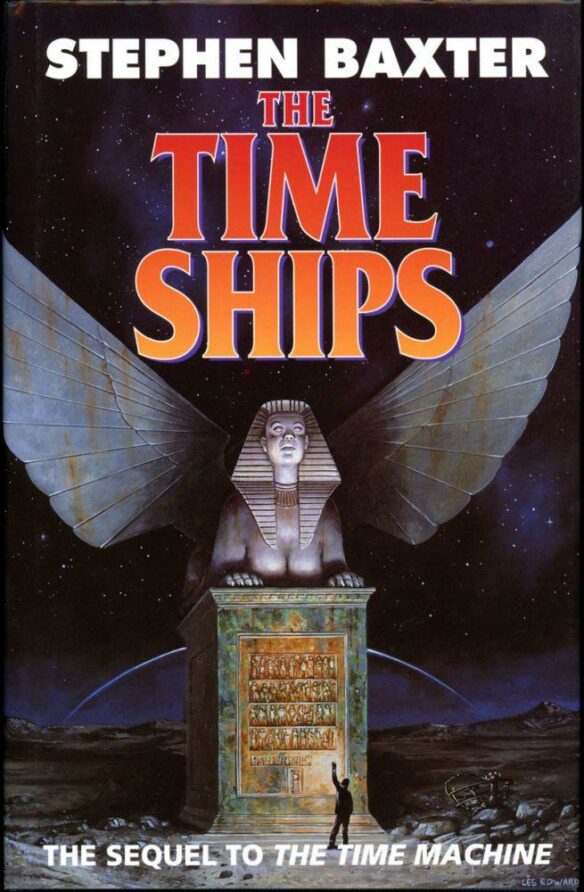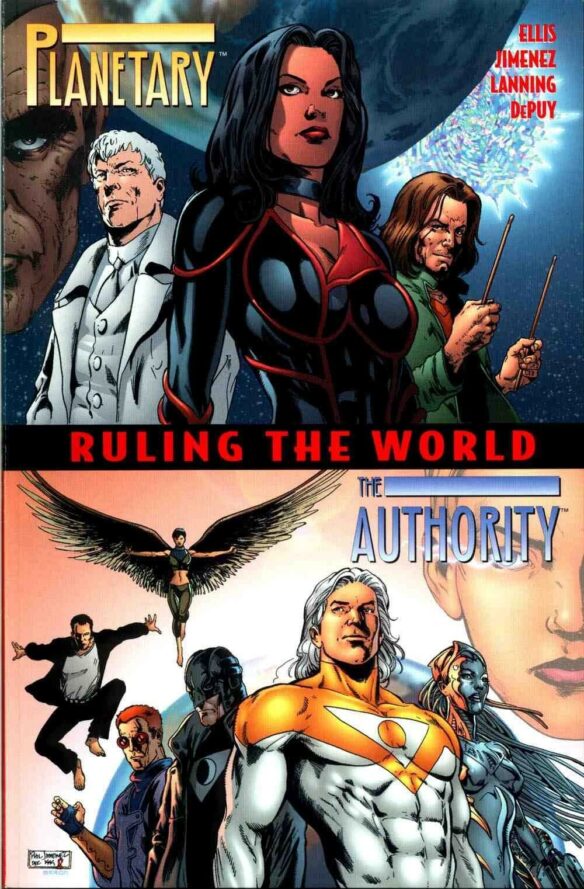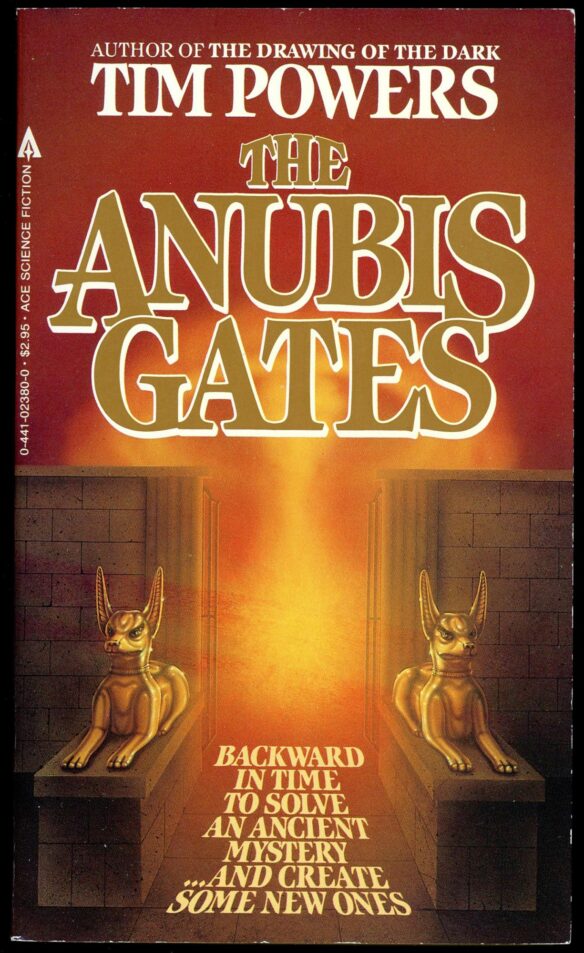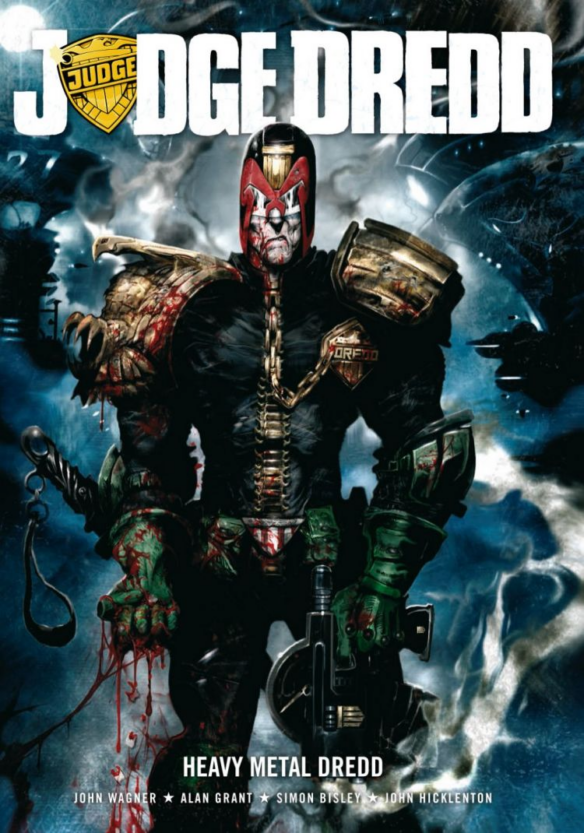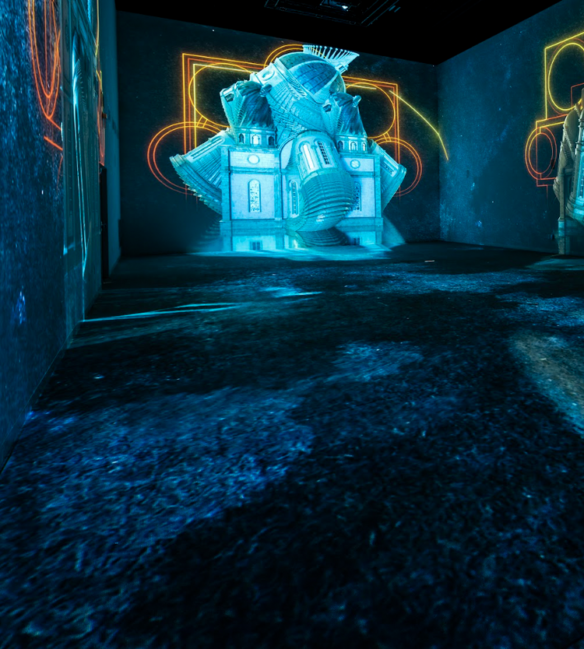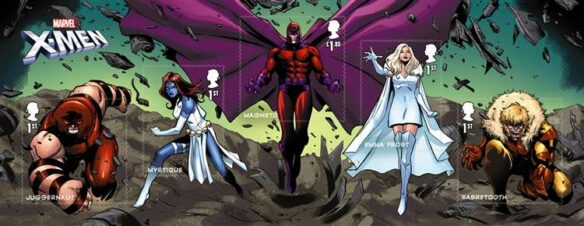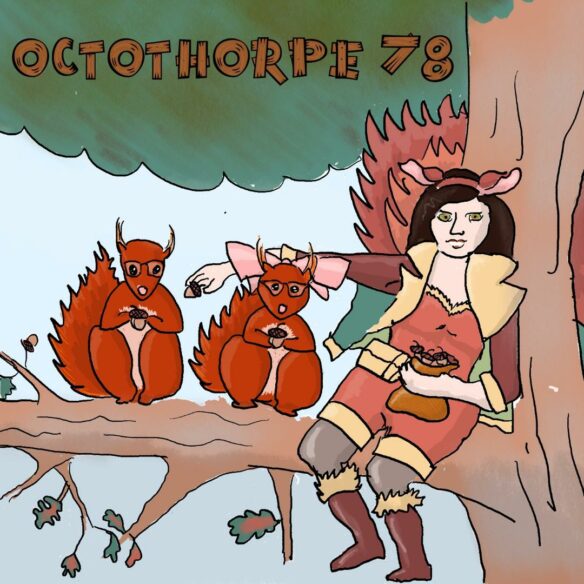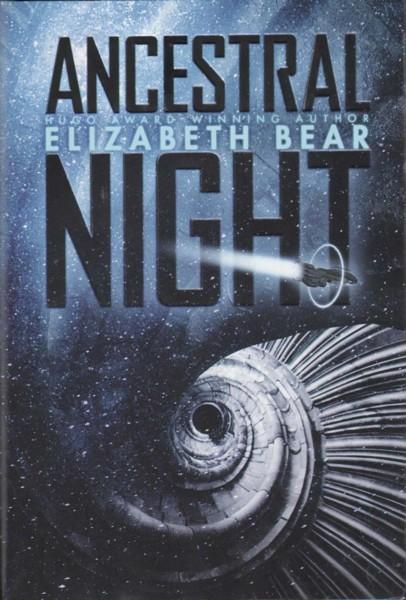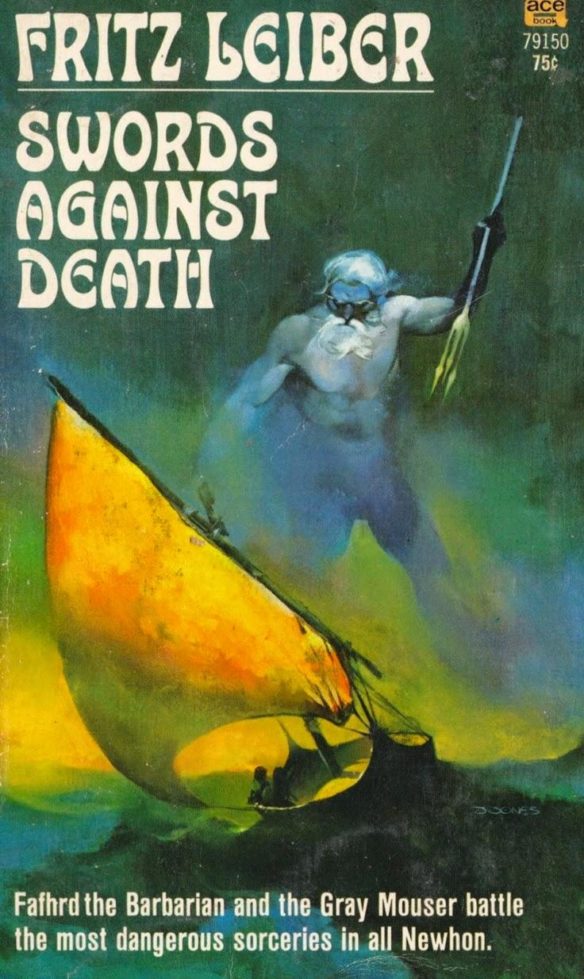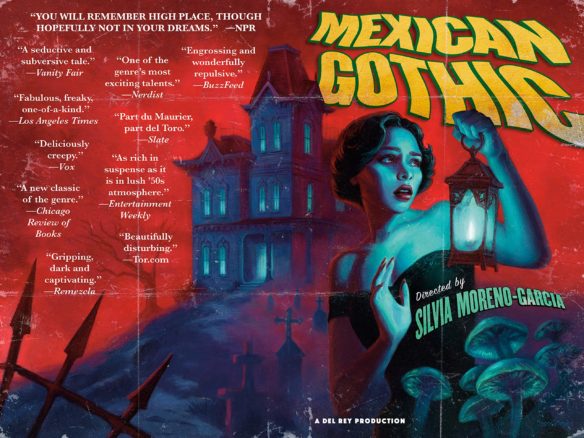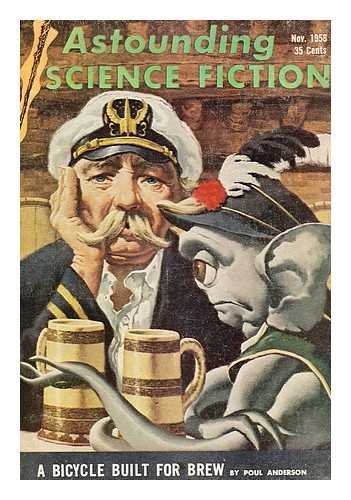(1) TO THE NASFIC AND BEYOND. A chapter of Sandra Bond’s Trans-Atlantic Fan Fund trip saga appears in the new issue of Geri Sullivan’s fanzine Idea 13. Says S&ra, “It contains my report on Pemmi-Con with detailed thoughts on What Went Wrong With It And Why.”
Day thirteen of TAFF, unlucky for some. Sandra Bond – already befuddled by her travels and overwhelmed by the generosity of North American fans – has left Minneapolis and has hitched a lift with Minnesota fans Curt Gibson and Alice Ableman in Curt’s mom’s SUV, riding north for NASFiC. No, you haven’t missed any previous instalments; they will be published elsewhere, in due course, and eventually a complete version will follow. I’m starting with this chapter, partly because Geri is publishing it and chapter 1 will largely be about her as my first host, and partly in order to air some issues arising from Pemmi-Con while the iron, so to speak, is hot….
Here’s a taste of those hot iron issues. Think of it as what the 2023 Worldcon experience would have looked like if Chengdu had not wrested it away from Winnipeg.
… (The programme as a whole showed every sign of having been thrown together by robots with no human eyes; for instance, the registration field had a space for you to enter your “organization.” I had put “TAFF”, which was fine, but Tanya Huff had foolishly essayed a little joke by putting “I am not at all organized” in that field, and was rewarded by having that phrase appended to her name on every single programme item featuring her. Others were flagged as variations on “n/a” or “–”, or found themselves billed as representing the organisation of “Myself” (Rich Horton) or “Julie E. Czerneda” (go on, guess). And Nisi Shawl – a fucking guest of honor, and consequently on many programme items – was accompanied on every occasion by the tag “I believe you already have my bio and photo.” Apparently they didn’t, since her “photo” was the generic one used for people who hadn’t supplied any.)…
(2) WHEN NEEDS MUST. The BBC interviewed a fan who remembers “When Tom Baker popped in to watch Doctor Who”. The experience wasn’t quite like when Dustin Hoffman needed to see “Wapner” in Rain Man, but was not entirely unlike it, either.
The time is November 1976, and the space is the Nuneaton branch of Radio Rentals, the old TV stockist that was once a familiar high street fixture. Pauline Bennett remembers being on shift there when a “very smart chap” walks in with a strange request.
“He came in about five o’clock and said he and Tom Baker needed to watch the Doctor Who episode that was going to be on shortly,” she said.
Titular star Baker had been travelling back from the show’s exhibition in Blackpool with BBC manager Terry Sampson when the pair were delayed by fog.
They had turned off the motorway heading for the town, hoping to persuade someone to let them watch the show, the first to feature filming at an outside location, she explained….
(3) FREE AT LAST. Jennifer Jenkins, Director, Duke Center for the Study of the Public Domain, tells us what we can look forward to on “Public Domain Day 2024” at the Duke University School of Law blog.
On January 1, 2024, thousands of copyrighted works from 1928 will enter the US public domain, along with sound recordings from 1923. They will be free for all to copy, share, and build upon. This year’s highlights include Lady Chatterley’s Lover by D. H. Lawrence and The Threepenny Opera by Bertolt Brecht, Buster Keaton’s The Cameraman and Cole Porter’s Let’s Do It, and a trove of sound recordings from 1923. And, of course, 2024 marks the long-awaited arrival of Steamboat Willie – featuring Mickey and Minnie Mouse – into the public domain. That story is so fascinating, so rich in irony, so rife with misinformation about what you will be able to do with Mickey and Minnie now that they are in the public domain that it deserved its own article, “Mickey, Disney, and the Public Domain: a 95-year Love Triangle.” Why is it a love triangle? What rights does Disney still have? How is trademark law involved? Read all about it here. …
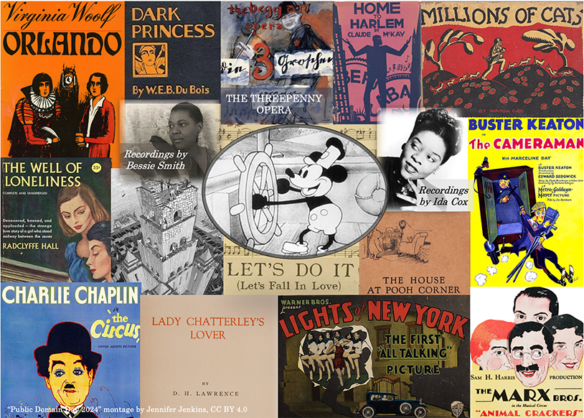
(4) NO WAITING FOR PUBLIC DOMAIN HERE. In “’Gale: Stay Away From Oz’ Offers a Horror Take on ‘The Wizard of Oz’”, The Mary Sue reminds everyone this 30-minute short already was released in September.
…In 2023, The Wizard of Oz books by L. Frank Baum entered the public domain. That means anyone can take those characters or the world of Oz and reimagine them in brand-new stories. The independent short horror film Gale: Stay Away From Oz does just that. According to IMDB, Gale‘s official summary is “Long gone are the days of emerald cities and yellow brick roads. In this dark re-imagining of the Wizard of Oz, Dorothy Gale is now an elderly woman, broken by years of paranormal entanglement with a mystical realm.” Emily Gale, the granddaughter of Dorothy, reconnects with her grandmother and the mystical realm that haunts her.
Unlike Winnie the Pooh, which also got the horror treatment, the original stories of Dorothy already lend themselves to the horror genre. Who hasn’t watched Return to Oz and felt terrified? With Gale: Stay Away From Oz, it seems like the curse of Oz haunts any of Dorothy’s descendants, which makes for an even creepier connection. So when is Gale: Stay Away From Oz coming out and where can you watch it?…
(5) AT THE NIMOY. “Mr. Spock’s Widow Puts on a Show” – and The New Yorker profiles her.
The other day, Susan Bay Nimoy—actress, writer, director, philanthropist, and widow of Leonard—stood at the entrance of a historic Art Deco theatre in Westwood, which she had helped to restore and convert to a live-performance space. On the marquee, lit bulbs spelled out the theatre’s new name: the Nimoy.
“There’s a lot of history,” Bay Nimoy, an exuberant eighty-year-old, said. “I called Jane Fonda and asked if she would come to the press opening, because her mother, Frances, funded the theatre.” More history: during the Second World War, newsreels played at the theatre; “Dr. Strangelove” had its first L.A. screening there, in 1964. Two decades later, when Disney managed the theatre, “Three Men and a Baby” was the opening film. Leonard was the director; Bay Nimoy accompanied him to the première. “It was certainly in the eighties, because I wore a black suit with big shoulder pads, with a lot of jewelled things on them,” she said….
… “Leonard and I came from very poor backgrounds. His father was a barber. My dad was an accountant,” Bay Nimoy said. The couple invested their Hollywood earnings in California real estate and contemporary art. “Leonard was not a fancy person,” she went on. When they met, she said, “I was driving a Honda.” Their goal was to give their children—he had two, she had one—a buffer, and no more. “They will not be gabillionaires, but they have a leg up,” she said. “And the rest we’re giving away.” They built a Jewish day school (their rabbi asked them to), a new theatre at Griffith Observatory (Leonard loved outer space), and a theatre for Symphony Space, in New York (where Leonard used to perform short stories)….
(6) NOTHING YOU HAVEN’T THOUGHT OF YOURSELF. Maris Kreizman tells New York Times Readers “Let’s Rescue Book Lovers From This Online Hellscape”.
… In an ideal world — one in which it wasn’t owned by Amazon — Goodreads would have the functionality of a site like Letterboxd, the social network for movie fans. Letterboxd has called itself “Goodreads for movies” but it has far surpassed that initial tag line, having figured out how to create a smooth and intuitive user experience, provide a pleasant and inviting community and earn revenue from both optional paid memberships and advertisers, including studios that produce the films being discussed. Meanwhile, publishers still rely on Goodreads to find potential readers, but targeted advertising has grown both less affordable and less effective.
So how to fix it? It starts with people: Goodreads desperately needs more human moderation to monitor the goings-on. Obviously, part of any healthy discussion is the ability to express displeasure — those one-star reviews, ideally accompanied by well-argued rationales, are sacrosanct — but Goodreads has enabled the weaponization of displeasure.
It’s not just fledgling authors being pummeled. Earlier this year, Elizabeth Gilbert, the best-selling author of “Eat, Pray, Love,” decided to withdraw a forthcoming novel, “The Snow Forest,” after Goodreads users bombarded its page with one-star reviews objecting primarily to the fact that the novel (which no one had yet read) was set in Russia and would be published at a time when Russia and Ukraine were at war. There is most likely no way to eliminate personal attacks entirely from the site — or from the internet, for that matter — but having more human beings on hand to mitigate the damage would certainly improve the experience.
Fortifying the guard rails wouldn’t be that difficult. Currently Goodreads uses volunteer librarians who add new books to the site’s database in their free time. Hiring these people (and scores more like them) and paying them a living wage would empower Goodreads’s representatives to communicate with publishers, large and small, to facilitate posting books to the site when, and only when, a book has actually been written and edited and is ready to be shared with the world….
(7) CURING YOUR WHO HANGOVER. In the unlikely event that you need somebody to explain the Doctor Who Christmas Special to you, The Hollywood Reporter has volunteered. “’Doctor Who’ Christmas Special “The Church on Ruby Road,” Explained”. For everyone else, beware spoilers. The following excerpt is a little spoilery though not prohibitively so, I thought.
…Initially, Mrs. Flood would appear to be just a normal neighbor. Nothing unusual about her, until we see her sitting down to enjoy the TARDIS dematerializing. Something that most humans would balk at.
However, not for Mrs. Flood. In fact, at the end of the episode, she says to her understandably shocked neighbor (who also witnessed The Doctor’s ship disappearing), “Never seen a TARDIS before?”
And, if this wasn’t enough, she looks directly down the camera and winks. Mrs. Flood is clearly someone to be reckoned with, and undoubtedly will make a return. But is she a familiar character in the Whoniverse? (Time Lords change their appearance quite regularly.) Or, is this a new friend/foe for The Doctor? Names have often hinted at deeper connections and meanings in Doctor Who (see Melody Pond and River Song, for example) — is there a clue here?
Mrs. Flood is played by Anita Dobson, who will be known to many in the U.K. as she made a name for herself as alcoholic landlady Angie Watts in the BBC’s long-running soap, Eastenders. An accomplished stage actress, Dobson is also married to Brian May, guitarist for rock outfit Queen (who’ve had a number of songs feature memorably in Doctor Who, such as “Bohemian Rhapsody,” “Crazy Little Thing Called Love” and “Don’t Stop Me Now”)….
(8) IT ONLY GETS WORSE. [Item by Mike Kennedy.] Did you get new clothes for Christmas? Then beware Jólakötturinn, the gigantic Yule Cat, which will chase you down and eat you if you don’t wear those clothes! “Meet the Yule Cat, an Icelandic folklore beast who eats children” on NPR.
… That’s right. A child’s worst nightmare — new clothes under the tree — could only be outdone by a somehow worse nightmare, being devoured by a ferocious feline that hunts down children caught not wearing their new clothes.
The tale of Jólakötturinn, which translates to Yule Cat, is an Icelandic Christmas classic dating back to at least 1932, according to the Icelandic Folklore website, a research project managed by the University of Iceland….
(9) THE COMPUTER SAYS ‘CHEESE!’ “A.I. Is the Future of Photography. Does That Mean Photography Is Dead?” wonders Gideon Jacobs in an opinion piece for the New York Times.
John Szarkowski, the legendary curator at the MoMA, once described photography as “the act of pointing.” And for the nearly 200 years since its inception, photography has consisted of capturing a visual perspective from the physical world using light — first with light-sensitive plates, then film, then digital sensors. When digital cameras became widely available, many photographers lamented the move away from analog technology but basically Szarkowski’s definition still held: Photography consists of pointing, as a reaction to something that exists in the world.
With advent of A.I. image generators, however, this definition feels obsolete.
Generative A.I. tools can produce photorealistic images, typically in response to written prompts. These images are available for purchase from major stock photography agencies, alongside traditional photos. They routinely go viral before being debunked. They even occasionally win prestigious photography prizes. All if which has reignited a two-centuries-old debate: What exactly qualifies as a photograph?
… Artists, writers and theorists have long remarked on our very human tendency to project slippery ideas about truth onto two dimensional surfaces. In 1921, Franz Kafka was told about a miraculous machine that could automatically take one’s portrait, a “mechanical Know-Thyself.” He offered up his own name for the apparatus: “The Mistake-Thyself.” Kafka was ahead of his time — in Susan Sontag’s 1977 essay “In Plato’s Cave,” she wrote, “Although there is a sense in which the camera does indeed capture reality, not just interpret it, photographs are as much an interpretation of the world as paintings and drawings are.” Each photograph, she argued, is inevitably the product of countless decisions informed, consciously or not, by the photographer’s predilections and biases, as well as the limits and parameters of the technology.
So when I hear some people calling the arrival of A.I. an extinction-level event for photography, I often think of the French painter Paul Delaroche who, legend has it, declared painting “dead” after seeing a daguerreotype, one of the first photographic inventions. Painting did not die; it just evolved into a different kind of artistry, freed from the obligations of verisimilitude….
(10) TODAY’S BIRTHDAY.
[Written by Cat Eldridge.]
Born December 26, — Elisha Cook, Jr. (Died 1995.) His first major role was the psychopathic killer Wilmer Cook in the 1941 version of The Maltese Falcon. Yeah there are two versions, I’ve never seen the earlier version. Anyone here seen it?
Now as for genre roles, his first was a Boris Korloff film, Voodoo Island, in which he was Martin Schuyler. Adam West is here in his first film role, uncredited.
His next horror film with Vincent Price, House on Haunted Hill, in which he was Watson Pritchard, is interesting because exterior shots of the house were filmed at the historic Ennis House in Los Feliz, California, designed by Frank Lloyd Wright and built in 1924.
Here’s a curious one for you. The Haunted Palace is a horror film starring Vincent Price Lon Chaney Jr. in which he’s Micah Smith / Peter Smith. The film was marketed as based on a Poe title but only the title is from him – the plot is from Lovecraft’s “The Case of Charles Dexter Ward” novella.
I saw Rosemary’s Baby once in which he played Mr. Nicklas. That was more than enough, thank you. Hey, he’s in the original The Night Stalker movie as Mickey Crawford. Neat. And next up is being Gordon “Weasel” Phillips in Salem’s Lot, a scary film indeed.
Most memorable series appearance? As Samuel T. Cogley, Esq in Star Trek’s “Court Martial” episode of course. He also made a Wild, Wild West appearance as Gideon McCoy in “The Night of the Bars of Hell”, the new Twilight Zone in “Welcome to Winfield” as Weldon, The Bionic Woman in “Once a Thief” as Inky and in ALF in “We’re So Sorry, Uncle Albert” as Uncle Albert. Oh, and his first television appearance was on the Adventures of Superman in “Semi-Private Eye” as Homer Garrity.

(11) COMICS SECTION.
- Frank and Ernest are forced to think outside the box.
- Thatababy makes sure there are enough bumps in your Christmas.
(12) EJECT! Arturo Serrano declares “Rebel Moon is the most Snyder that Snyder has ever been” at Nerds of a Feather. And that’s not a good thing.
One could summarize Rebel Moon as “the Zack Snyder of Star Wars,” which would sound mean-spirited if it weren’t its literal description. Conceived originally as Snyder’s pitch for Lucasfilm and eventually rescued by Netflix, Rebel Moon files off the Star Wars serial numbers just enough to prevent lawsuits from the Mouse. As you would expect, it tells the story of a loosely assembled team of impromptu freedom fighters who rise up against a brutal interstellar empire. A tale as old as time, and one that Lucasfilm has kept profitable for nine movies and I forget how many TV shows. But Snyder’s version of this formula, stripped of its identifiable markers for legal reasons, becomes a nameless, featureless collection of plot beats and cool poses. If there was ever a time when the infamous itch for canceling everything at Netflix could be used for good, it’s now. There’s no need for a Rebel Moon Part 2, or for all the multimedia spinoffs Snyder is reportedly preparing. This is not the galaxy you’re looking for….
(13) TO HELL AND MAYBE BACK. Disney+ has started airing the new series based on Rick Riordan’s YA fictionalization of Greek myth: “Percy Jackson and the Olympians: The Quest Begins in New Clip” from Comicbook.com.
Percy Jackson and the Olympians is gearing up to kick off its quest. The serialized adaptation of Rick Riordan‘s best-selling novels made its surprise debut on December 19th, dropping its first two episodes six hours ahead of schedule in the Tuesday primetime slot. This came with the announcement that all future episodes of Percy Jackson would get the primetime treatment, as the rest of Season 1 will premiere at 9 PM ET. The last fans saw, Percy (Walker Scobell) was officially claimed by his father, Poseidon, and given the news that he must lead a cross-country quest to retrieve Zeus’s (Lance Reddick) stolen master bolt. The belief is that Hades (Jay Duplass) stole it out of jealousy and is keeping it in the Underworld….
(14) STRANGE NEW WORLDS. We hear from the Guardian “How the James Webb telescope is ‘set to find strange and bizarre worlds’”.
There is a distant world where quartz crystals float above a searing hot, puffy atmosphere. Vaporised sand grains, not water droplets, form the clouds that fill the sky on Wasp-107b, a planet 1,300 light years from Earth.
Then there is GJ1214, the sauna planet. With a mass eight times that of Earth, it orbits its parent star at a distance that is one-seventieth of the gap between Earth and the sun and seems to be coated in a thick dense atmosphere containing vast amounts of steam.
Or there are the giant, Jupiter-sized planets of the Orion Nebula which have been discovered free-floating in space, rogue worlds that appear to be unconnected to any parent star – to the bafflement of astronomers….
(15) A YEAR’S WORTH OF SCREEN TIME. Gizmodo picks out the “40 Most Memorable Sci-Fi, Fantasy, and Horror Movie Moments of 2023”. Here’s one example:
Dungeons & Dragons: Honor Among Thieves: Jarnathan Arrives
This is the moment you knew Honor Among Thieves absolutely got Dungeons & Dragons. It’s an incredible set-up to a gag that builds over the opening scenes, establishing the roguish humor of our heroes, throwing a loving curveball to an esoteric D&D race, and of course giving us the most perfect ass-pull of a character name that feels like a Dungeon Master made it up for an NPC on the spot mid-improv. Oh Jarnathan, indeed.
(16) VIDEO OF THE DAY. “Our Pros bring Wednesday Addams to the Strictly Ballroom” from the BBC.
[Thanks to Mike Kennedy, Andrew Porter, John King Tarpinian, Daniel Dern, Jeff Warner, Kathy Sullivan, Chris Barkley, Cat Eldridge, SF Concatenation’s Jonathan Cowie, and Steven French for some of these stories. Title credit belongs to File 770 contributing editor of the day Daniel Dern.]


